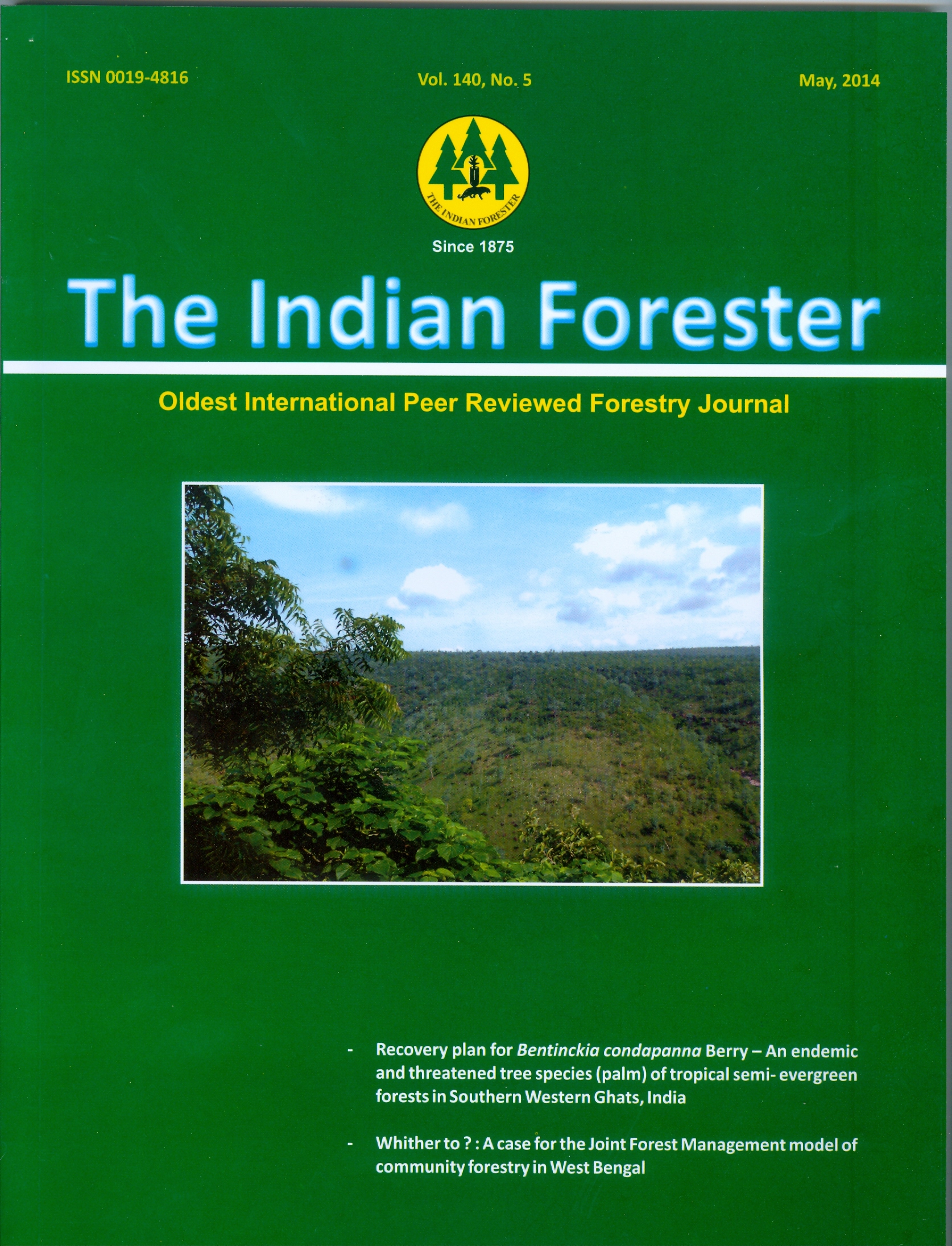Molecular Characterization of Promising Willow Clones Using Rapd Markers
DOI:
https://doi.org/10.36808/if/2014/v140i5/49089Keywords:
RAPD, Willow, Genetic Diversity, Characterization, PolymorphismAbstract
Twenty-five promising willow (Salix spp.) clones were selected after nursery screening twice, collected from six countries. Genetic relatedness among the clones was estimated using RAPD markers. Out of 20 primers tested, 16 primers were selected based on the amplification of DNA. A total of 339 bands were scored of which 338 were polymorphic showing high (99.7%) rate of polymorphism. The similarity coefficient ranged from 0.71 to 0.87. These clones were grouped into six different clusters. Clone PN-733 (Salix nigra from New Zealand) appeared to be the most diverse (76 %) from rest of the genotypes on the basis of dendrogram. Maximum similarity (87%) was observed between clones SI-63-007 (S. alba from Italy) and V-99 (Salix alba X S. rubens from Croatia). RAPD analysis proved helpful for estimating the magnitude of genetic diversity at molecular level. The clustering further indicated that the geographic distribution may not be the true index of genetic diversity in willow clones. The marker system was found useful for developing unique fingerprints of three genotypes. On the basis of banding pattern RAPD's were effectively used for molecular characterization of willow clones used in this study.References
Barker, J.H.A., Mathews Michaela, Arnold Gillian, M., Edwards Keih, I., Ahman Inger, Larsson Stig and Karp Angela (1999). Characteristics of genetic diversity in potential biomass willows Salix species by RAPD and AFLP analysis. Genome, 42: 173-183.
Barker, J.H.A., Pahlich, A., Trybush, S, Edwards K., and Karp Angela (2003). Microsatellite markers for diverse Salix species. Molecular Ecology Notes, 3: 4-6.
Castiglione Wang, E., Damiani, G., Bandi, G.C., Bissofi, S. and Sala, F. (1993). RAPD fingerprints for identification and for taxonomic studies of elite poplar clones. Theoretical and Applied Genetics, 87-54-59
Choudhary, P. (2011). Crossability studies and genetic variation among controlled pollinated progenies of tree willows. Ph.D Thesis. Dr. Y.S.Parmar University of Horticulture and Forestry, Solan India, 267p
Doyle, J.J. and Doyle, J.J. (1987). A rapid DNA isolation procedure from small quantities of fresh leaf tissue. Phytochemistry Bulletin, 19: 11-15
FAO (2004). Preliminary review of biotechnology in forestry including genetic modification. Genetic resource working paper FGR/59F. Forest Resources development Service. Forest Resource Division Rome Italy.
Kuzovkina, Y.A. (2008). Salix: Botany and Global Horticulture. Horticulture Reviews, 34: 447-48
Lin, D., Hubbes, M. and Zsuffa, L. (1994). Differentiation of poplar and willow clones using RAPD fingerprints. Tree Physiology, 14(10): 1097-1105.
Liu, Z. and Furnier, G.R. (1993). Comparison of allozyme, RFLP and RAPD markers for revealing genetic variation within and between trembling aspen and big tooth aspen. Theoretical and Applied Genetics, 87: 97-105
Rohlf, F.J. (1998). NTSYS-PC Numerical Taxonomy and Multivariate System Version 2.02. Applied Biostatis Inc., New York.
Sanchez, N., Grau, J.M., Manyanera, J.A. and Bueno, M.A. (1998). RAPD markers for the identification of Populus species. Silvae Genetica,47(2-3): 67-71.
Su Xiaoheea, Zsuffa L, Lin, D. and Su, X.H. (1995). Estimation of variation in Salix and its clones by RAPD. Scientia-Silvae Sciencia, 31(3): 211-214
Sviatlana Trybush, Sarca Jahodova, William Macalpine and Angela Karp (2008). A genetic study of a Salix germplasm resource reveals new insights into relationships among subgenera, sections and species. Bioenergy Research,1:67–79.
White, T.L., Adams, W.T. and Neale, D.B. (2007). Forest genetics. CABI. 680p
Zsuffa, L. and Mosseler, A. (1986). The collection and distribution of clones of Salix species and hybrids, which are of importance for biomass production in energy plantation. In: Proceedings Joint Management IEA Forestry Programme and FAO. Network for Rural Energy October. 28-30. 1995 Swedish University of Agricultural Science Publication, 1: 54-73.
Downloads
Downloads
Published
How to Cite
Issue
Section
License
Unless otherwise stated, copyright or similar rights in all materials presented on the site, including graphical images, are owned by Indian Forester.





